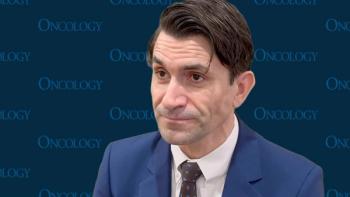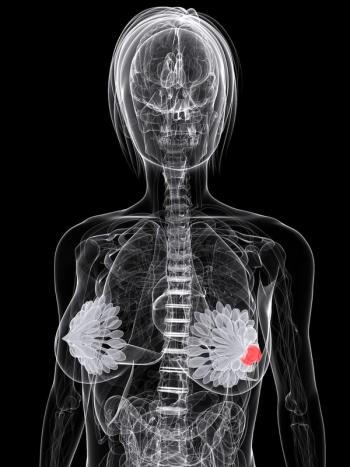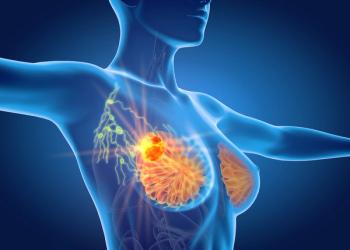
- ONCOLOGY Vol 39, Issue 9
- Volume 39
- Issue 9
- Pages: 436-437
Trabedersen (OT-101) With Pembrolizumab for Newly Diagnosed PD-L1–Positive Metastatic NSCLC
Background
Non–small cell lung cancer (NSCLC) remains the most prevalent subtype of lung carcinoma and a leading global cause of cancer-related mortality. Despite remarkable progress with targeted therapies, as well as durable responses observed with immune checkpoint inhibitors against PD-1/PD-L1 and CTLA-4, therapeutic resistance remains a significant barrier. Within the tumor microenvironment, TGF-β signaling fosters immune evasion, stromal remodeling, and epithelial-mesenchymaltransition. Of all the isoforms of TGF-β, the TGF-β2 isoform plays a particularly pivotal role in immunosuppression, making it an attractive therapeutic target.
Trabedersen (OT-101), a synthetic 18mer phosphorothioate antisense oligodeoxynucleotide, selectively inhibits TGF-β2 messenger RNA production, thereby avoiding the toxicities associated with broader TGF-β blockade. In a phase 1/2 clinical trial across solid tumors including pancreatic carcinoma, melanoma, and colorectal cancer, trabedersen was well tolerated, with pharmacokinetics demonstrating dose-proportional exposure and a favorable safety profile; notably, patients with high area under the curve who received subsequent chemotherapy experienced more than doubled overall survival (OS; median OS, 9.6 vs 2.4 months; P = .0006). In preclinical models, trabedersen converted immune “cold” to immune “hot” tumors through enhanced immune infiltration and showed synergy with both chemotherapy and immunotherapy.
This is an investigator-initiated phase 1/2 trial (NCT06579196) that evaluates the combination of pembrolizumab and trabedersen in patients with treatment-naive advanced NSCLC with PD-L1 expression greater than or equal to 1%. The objective of the first phase is to evaluate safety and the recommended phase 2 dose. The objective of the phase 2 portion of the study is to evaluate the median progression-free survival. Secondary end points include response rate and OS. The study includes the interrogation of a panel of biomarkers that, according to data analysis, predict an improved clinical response to anti–TGF-β2 therapy.
Eligibility Criteria
Key inclusion criteria: Patients must have an age of at least 19 years, a histologically/cytologically proven diagnosis of NSCLC with a PD-L1 of at least 1%, metastatic disease or locally advanced disease that is not amenable for curative intent therapy, and an ECOG performance status of 0 to 2.
Key exclusion criteria: Patients may not have had any systemic treatments including investigational agents within the last 28 days, presence of ALK or EGFR mutations, radiotherapy within 14 days of the study intervention (however, palliative radiation is allowed during the study with a 1-week washout), history of autoimmune disease that has required systemic treatment in the past 2 years, history of venous thromboembolism that requires lifelong anticoagulation, or known active second malignancy or history of malignancy that was treated within 5 years.
Study sites, Patient Accrual Information, and Accrual Goal
The trial will be conducted at the University of Nebraska Medical Center in Omaha and affiliated sites. The sample size of the first phase will be 12 patients, and the second phase will have 27 (a total of 39 participants).
Open Date and Percentage Accrued
The study started in June 2025. No patients have been enrolled by the date of submission of August 26, 2025.
Contact information
Contact: Omar Khaled Mahmoud Abughanimeh
Phone: 402-559-8013
Email: Omar.Abughanimeh@unmc.edu
Articles in this issue
about 2 months ago
3 Things You Should Know About Single-Agent ADCs in TNBC Treatmentabout 2 months ago
Late Hepatic Recurrence From Granulosa Cell Tumor: A Case Reportabout 2 months ago
Awareness Fuels Progress: Upcoming Advances in Breast Cancer TreatmentNewsletter
Stay up to date on recent advances in the multidisciplinary approach to cancer.

















































































